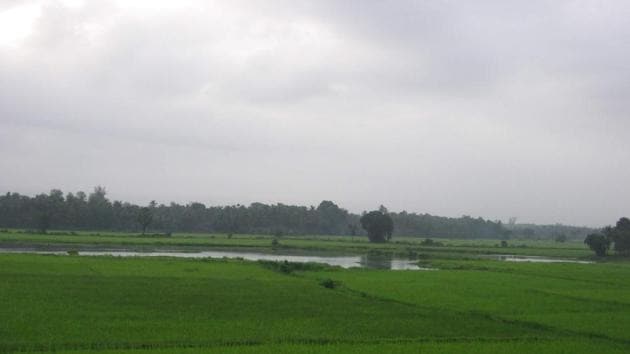Goa battles to save its low-lying lands from redesignation by the MoEF
This move will affect the livelihood of Goan villagers who depend on these khazans. The state government seeing the plight of the farmers have asked the environment ministry to implement their plan carefully.
The Goa government, farmers and activists are up in arms against the environment ministry for proposing re-designation of the state’s low lying lands --- locally known as khazans -- that are used by farmers in the state’s coastal areas for both used for agriculture and aquaculture.

The National Centre for Sustainable Coastal Management (NCSCM), a scientific body under the environment ministry, has been entrusted with the job to define coastal areas under the Coastal Zone Management plan for the state. In its proposal, the NCSCM has re-defined these ‘lands’, instead marking them as tide-influenced water bodies, thus opening the door for uses other than agriculture and aquaculture.
According to the NCSCM, a water body that has reported a salinity concentration of 5 parts per thousand (ppt) or more during the driest month of the year is considered to be influenced by tidal action. Consequently the land that surrounds such a water body will be considered under ‘coastal regulation zone’.
But according to the government and local farmers these lands should not be considered as tide-influenced water bodies as they are protected from the tides by a network of dykes and sluice gates.
According to state government officials, khazan lands are multiple uses and through smart use of the network of dykes and sluice gates these lands can either be used for growing paddy, cultivating freshwater fish or for farming saltwater fish and prawns. Similarly, the lands can also be used as salt pans.
Farmers’ collectives fear that re-designation of these lands will spell doom for their livelihood.
“The bund (dyke) that protects our land from the main river has been shown as a jetty whereas the paddy fields themselves will be open to development,” Johnny Lobo, a farmer hailing from Camarkhazan which lies on the outer edge of the Mapusa town in North Goa.
Lobo and a group of villagers came together to re-cultivate the fields for the first time in decades spurred on by the fear that they could lose these lands to development.
“We have submitted an independent plan that has all the changes correctly marked,” Lobo said.
Besides losing these fields, villagers fear that they could lose fish and their breeding, and bird nesting sites. It also stands to lose other traditional water bodies like ponds, and mangrove forests among others if the incorrect maps are notified.
According to government figures, Goa has 431.63 square kilometres of khazan land and 11.65% of Goa’s total area consists of such lands mainly along the coast or along Goa’s network of rivers and creeks.
In a rare case where the Goa government is supporting the people, Goa’s Environment Minister Nilesh Cabral rushed to Delhi to petition MoEF officials, said that the plan should be drawn up in such a manner that “so that this can be put to use as was originally meant for.”
Cabral has said that his department has already written to the Ministry of Environment and Forests seeking that all these lands be demarcated as ‘ecosensitive zones’.
“All khazans, aquaculture ponds and salt pans should be demarcated and categorised as eco-sensitive zones,” Cabral assured. “Let us hope for a positive response,” Cabral said.
In many of Goa’s villages the dykes have not been maintained since the lands have been left fallow leading to inundation through most of the year.
“We are losing the lands to the river. If these lands are re-designated we are opening these lands and making them available for uses that are alien to us like boating or even industrial use that requires water front like stacking coal. The government can automatically claim that being a water body, they are open to use it,” Abhijit Prabhudesai, an environmental activist, said.
He added that these lands are also a source of food for the villagers who reside in Goa as it provides them with their staple rice and fish.
“More than that it will bring a huge section of Goa’s population under the coastal regulation zone, many of whom do not have the wherewithal to legally defend themselves against the government,” he added.
With the National Green Tribunal setting November 15 as the deadline to complete the coastal plan, locals fear there isn’t enough time to complete the process accurately.
Get Current Updates on India News, Lok Sabha election 2024 live, Election 2024 along with Latest News and Top Headlines from India and around the world.



